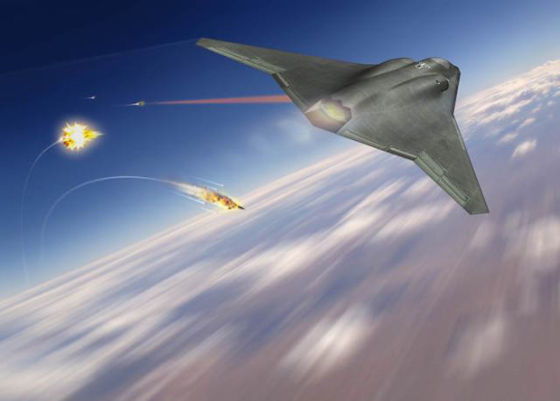честно говоря, не понимаю, почему такая интересная статья из BusinessInsider - “Su-35 and F-22 compare” ещё не появилась в русском переводе.
Приведу статью полностью (англ) - сравнение самолётов по разным параметрам.
Но главная идея - раньше обнаружил-раньше выстрелил, никакого dogfight. И здесь преимущество F22 перед СУ35.
F-22 -
Max Speed: 1,726 mph
Max Range: 1,840 miles
Dimensions: Wingspan: 44.5 ft; Length: 62 ft; Height: 16.7 ft
Max Takeoff Weight: 83,500 lb
Engines: Two F119-PW-100 turbofan engines with two-dimensional thrust-vectoring nozzles
Armament: One M61A2 20-mm cannon with 480 rounds, internal side weapon bay carriage of two AIM-9 infrared (heat seeking) air-to-air missiles, and internal main weapon bay carriage of six AIM-120 radar-guided air-to-air missiles (air-to-air load out) or two 1,000-pound GBU-32 JDAMs and two AIM-120 radar-guided air-to-air missiles (air-to-ground loadout).
СУ-35Max Speed: 1,490 mph
Max Range: 1,940 miles
Dimensions: Wingspan: 50.2 ft; Length 72.9 ft; Height 19.4 ft
Max takeoff weight: 76,060 lb
Engines: Two Saturn 117S with TVC nozzle turbofan, 31,900 lbf/14,500 kgf each
Armament: One 30mm GSh-30 internal cannon with 150 rounds, 12 wing and fuselage stations for up to 8,000 kg (17,630 lb) of ordnance, including air-to-air missiles, air-to-surface missiles, rockets, and bombs.
Maneuverability
Russia based the Su-35 on the rock-solid Su-27 platform, so its status as a "supermaneuverable" fighter is a matter of fact.Russian pilots familiar with previous generations of the Sukhoi jet family's thrust-vectoring capabilities have carried out spectacular feats of acrobatic flight, like the "Pugachev's Cobra."
On the other hand, the F-22 has a great thrust-to-weight ratio and dynamic nozzles on the turbofan engines. These mobile nozzles provide the F-22 with thrust-vectoring of its own, but they had to maintain a low profile when designing them to retain the F-22's stealth edge.
Most likely, the Su-35 could out-maneuver the F-22 in a classic dogfightElectronic warfareBoth Russia and the US classify their most up-to-date electronic-warfare capabilities, but it should be assumed that they are both state of the art and nearly equal in efficacy.
FirepowerBoth planes are equipped with state-of-the-art missiles capable of shooting each other out of the sky. The Su-35's need to carry ordinance outside the fuselage is a slight disadvantage,
but in general, the first plane to score a clean hit will win.
The Su-35 can carry 12 missiles, while the F-22 carries just eight, but as Justin Bronk from the Royal United Services Institute notes in an interview with Hushkit.net, the Su-35 usually fires salvos of six missiles with mixed seekers, meaning the 12 missiles only really provide two credible shots.
The F-22 could engage the Su-35 from farther away as it is harder to detect due to its stealth advantage, so it could potentially make more economical use of its missiles.
StealthThis is where things get interesting: In the arena of stealth, the F-22 is head and shoulders above any other operational jet in the world right now.
For perspective, the Su-35's radar cross-section (area visible to radar) is between 1 and 3 square meters, or about the size of a large dinner table. The F-22's radar cross section is about the size of a marble.
As Justin Bronk notes:
Whilst the Su-35 does have the hypothetical capability to detect the F-22 at close ranges using its IRST (Infa-Red Search and Tracking) and potentially the Irbis-E radar, both sensors would have to be cued to focus on exactly the right part of sky to have a chance of generating a target track.
By contrast, the F-22 will know exactly where the Su-35 is at extremely long range and can position for complete control of the engagement from the outset with superior kinematics.
Conclusion: USA.So the F-22 and the Su-35 prove to be two planes of significantly different talents. The Su-35 carries more missiles, can fly farther, and is significantly cheaper. The Su-35 is a reworking of earlier Sukhoi models that are proven to be effective in traditional dogfighting.
But the F-22 wants no part in traditional dogfighting. Battles that occur when the two planes are within visual range of each other seem to favor the Russian jet, but importantly, battles begin beyond visible range.
A single Su-35 simply stands little chance against a similar number of F-22s because the US jets employ far superior stealth technology.
F
-22 pilots need not worry about out-turning or out-foxing the agile Su-35, as they could find and target the aircraft from much farther away and end the dogfight before it really starts.
Additionally, the US Air Force trains F-22 pilots to some of the highest standards in the world.Historically, US-made planes have battered Russian-made ones, and the newest generation of US warplanes reimagines aerial combat in a way that future pilots won't even have to get their hands dirty to deter or defeat the enemy.
http://www.businessinsider.com/how-su-35s-and-f-22s-compare-2016-4Как видите, разница вИдения двух самолётов в каждой стране разная, поэтому глобальная картина вИдения стратегии/тактики каждой страной тоже разная. США имеет сотни баз на глобусе, и держать 3D (глобус+воздух+суша+вода+под_водой) картину в случае чего - для этого и нужно “семейство систем”. Преимущество системы очевидно и может компенсировать отставание в отдельно взятом роде войск или вооружении. Где-то так...





